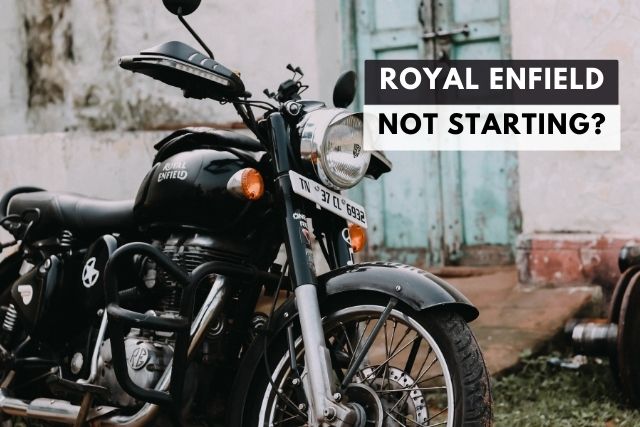Royal Enfield motorcycles are a beauty. But a pain when the Enfield won’t start.
If your Royal Enfield motorcycle is not starting, here are the reasons:
- Ignition switch is OFF
- Low fuel levels
- Kill switch is ON
- Reserve fuel switch is OFF
- Engaged gear or clutch is NOT pulled in
- Blown fuse
- Damaged spark plugs
- Battery problem
- Engine malfunction
We have classified all these problems into 3 categories based on their difficulty levels to fix. The 3 classifications are:
We want you to start with Beginner problems and then go through Advanced starting problems and lastly come to Intermediate problems.
Why this order?
Well, beginner problems are rookie mistakes and the easiest to fix. So makes sense to go through them first.
Advanced problems are easier to identify but the most difficult to fix. So go through them to identify the problem. For fixing the issue, you might have to take your Royal Enfield to the dealer or the service center.
Lastly, intermediate problems are DIY jobs. You might have to spend quite a time to fix. That’s why we recommend you go through them last.
Enough of this story. Let’s dive in.
Beginner Starting Problems
Let’s first start with beginner issues that are stopping your Royal Enfield engine from starting.
These issues are labeled beginner for the dole reason that they are the most common rookie mistakes. And can be addressed easily. No DIY skills required.
Let’s dig in.
#1: Ignition switch is OFF
First things first. Have you turned the ignition switch ON?
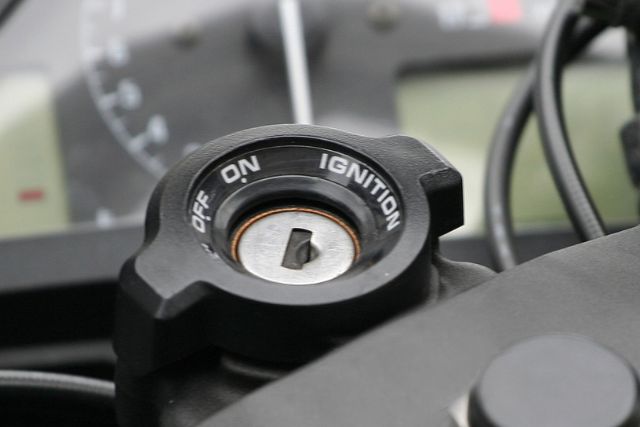
I know. I know. You are not this dumb. You wouldn’t be on a google search spree if the problem was you forgetting to switch the ignition key ON.
Still, check it once will ya.
I have had my fair share of forgetfulness and airheadedness. This might be your turn now.
How to check
Do I even need to explain this? Okay. I will.
Look at the ignition switch on your motorcycle. Have you turned the key to the ON position?
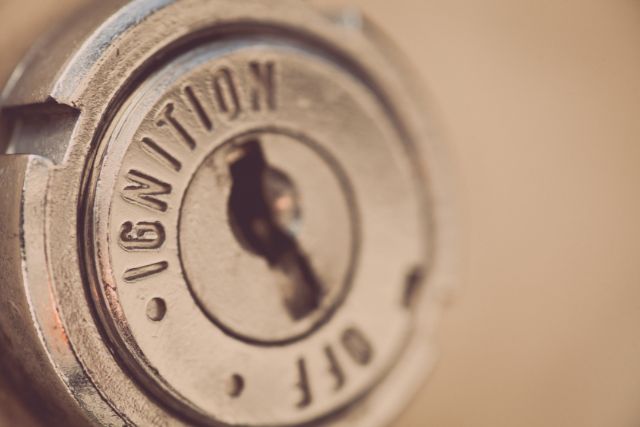
Sometimes, I just go from handlock to OFF. And then try starting the motorcycle.
Silly I know. But I am ashamed to say, it happens more often than I would like to admit.
So go ahead. Check the ignition switch. Have you turned the key to the ON position? If not, fix it silly.
How to fix
Simple. Turn the key to the ON position.
Whether it was at handlock before or at OFF. Turn the key clockwise.

If the ignition switch was at the handlock position, you have to push the key down and then turn it. Reach the OFF position. And then turn the key again to the ON position.
#2: Low fuel levels
Checking the basics. The fuel levels might be low or nil – causing the motorcycle to not start.
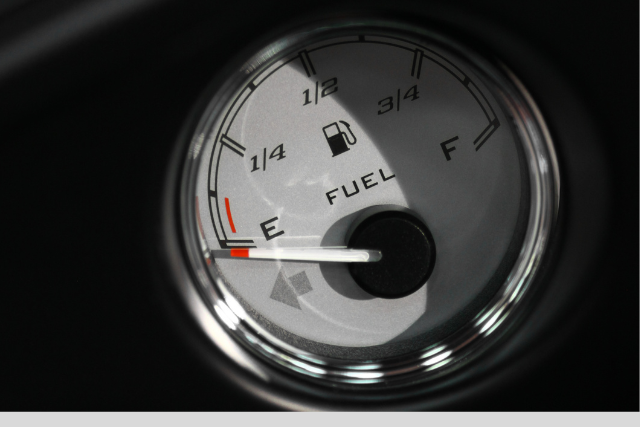
This is simple stuff. Yet oftentimes we overlook. Low fuel levels can be the reason for the motorcycle not starting.
How to check
To confirm whether the low fuel level is the problem, check the fuel gauge on your motorcycle.
Usually, it is coupled with the speedometer or the odometer. If not, there will be separate fuel gauges in some motorcycles as well.
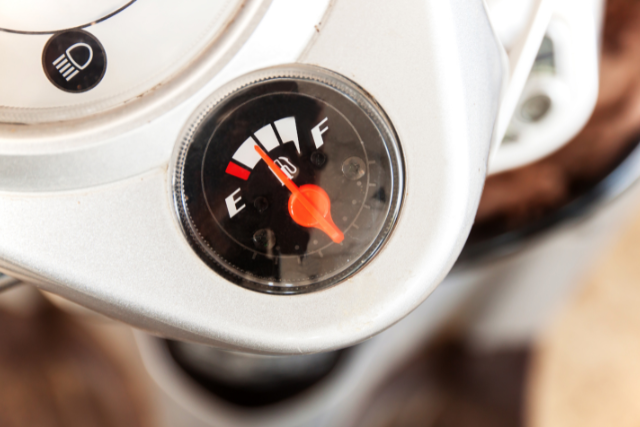
The fuel gauge can be read as:
- ‘F’ stands for the full tank; also denoted as 1 in some motorcycles.
- ‘E’ stands for the empty tank; also denoted as 0 or R in some motorcycles.
If the needle is pointing to E, then the fuel tank is empty. It is common sense to refill the tank when the needle is pointing in the red zone.
If it is indeed pointing to E, then low fuel level is what causes your motorcycle to not start.

Few motorcycles will have digital fuel gauges. The fuel tank symbol will flicker or will show red to indicate low fuel levels.
How to fix
For low fuel, you need to refill your fuel tank with gasoline. So go to your nearest gas station and fill the motorcycle with some gasoline in your fuel tank.

You can also try switching to the RES position if the fuel levels are low.
‘RES’ refers to switching to the reserve tank. The fuel flows from the reserve tank to the carburetor and then to the engine. This is handy when your main fuel tank runs out of gasoline.
#3: Kill switch is ON
A basic oversight. Having the kill switch ON will prevent the engine from starting.
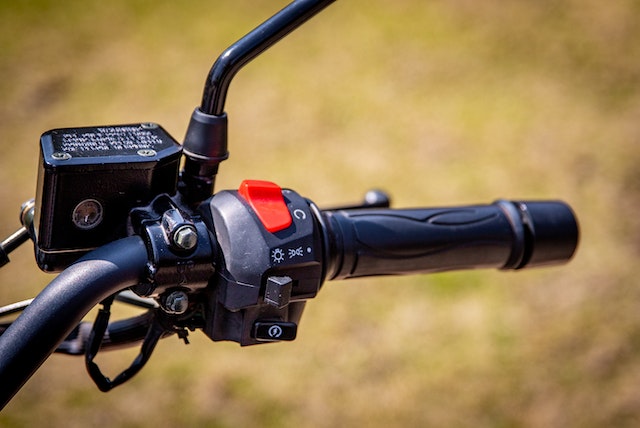
A kill switch is a red color safety button located on the right side of the motorcycle handlebar.
The kill switch helps to quickly shut down the engine and prevent the motorcycle from running. The switch is particularly helpful in the case of emergencies.
A common practice for most motorcycle riders is to switch ON the kill switch when they are not riding the motorcycle. It’s synonymous with taking the keys off their motorcycles.
And literally switching the kill switch ON is coupled with taking the keys off their motorcycles.
How to check
To check whether the kill switch is ON, look at the kill switch located on the right side of the handlebar as this red button.
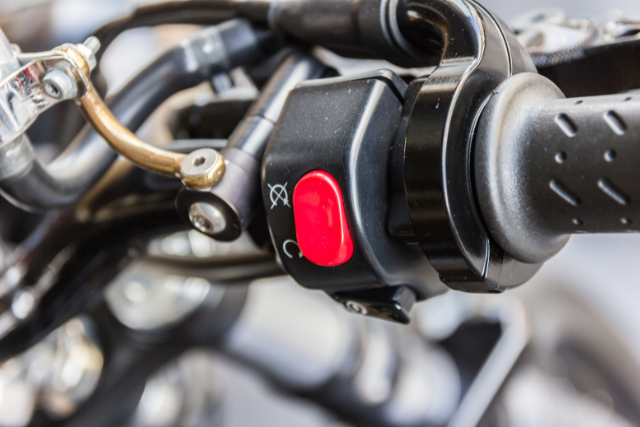
If the kill switch is ON, which is usually when the switch is pressed upward, then this is the reason for your motorcycle not starting.
How to fix
The fix is not a fix, it’s that easy. Easier than filling up the fuel tank.
Change the kill switch to the ‘OFF’ position. Press the button, usually downside, to OFF.
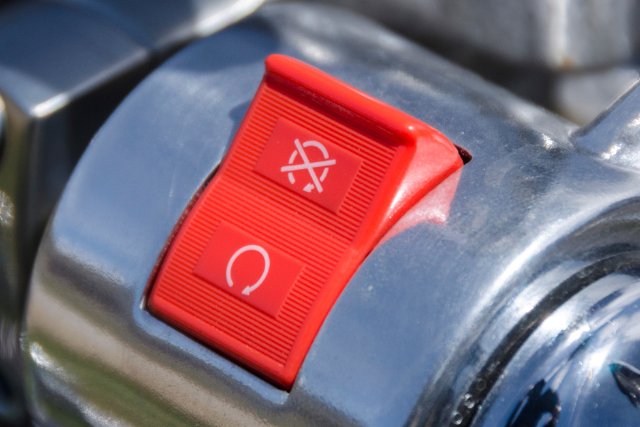
Once the kill switch is OFF, the ignition circuit is now active. You can start the motorcycle without any issues.
#4: Reserve fuel switch is OFF
Another rookie thing. The reserve fuel switch is in the ‘OFF’ position – causing the motorcycle to not start.
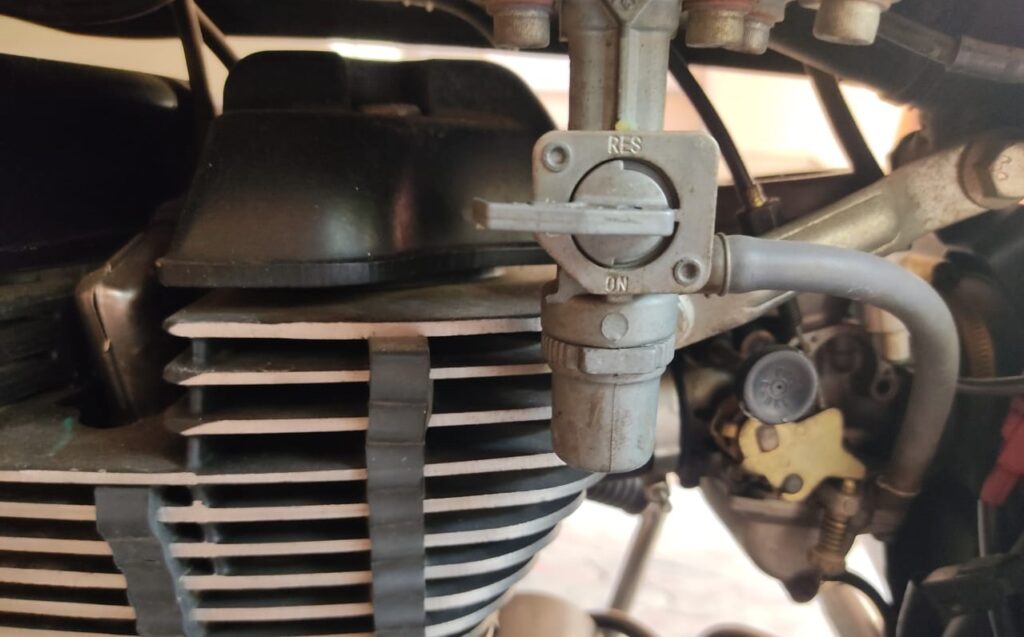
This is simple stuff. Yet oftentimes we overlook. The reserve fuel switch position can be the reason for the motorcycle not starting.
How to check
For the reserve fuel switch, check the fuel petcock valve position in your motorcycle.
If the switch is in the ‘OFF’ position, then the fuel is not flowing from the tank to the carburetor. As a result, the engine is not getting the fuel and hence is not starting.
If the reserve fuel switch is indeed OFF, then you need to turn it so that the fuel can flow into the carburetor and then into the engine.
How to fix
For the ‘OFF’ position in the reserve fuel switch, turn the valve into the ‘ON’ position. That should do the trick if there is fuel in the tank.
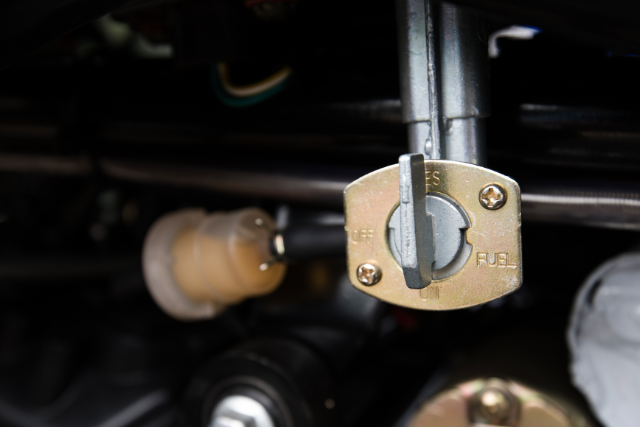
If there is low fuel in the tank, you can try switching to the RES position.
Either ON or RES works. The problem occurs when the fuel switch is in the OFF position. The fuel supply to the carburetor is cut off.
So switch to the ON position. Or RES position if the fuel is less.
#5: Engaged gear or clutch is NOT pulled in
Beginner mistakes. If the motorcycle is not in neutral gear or if the clutch is not pulled in, the motorcycle won’t start.
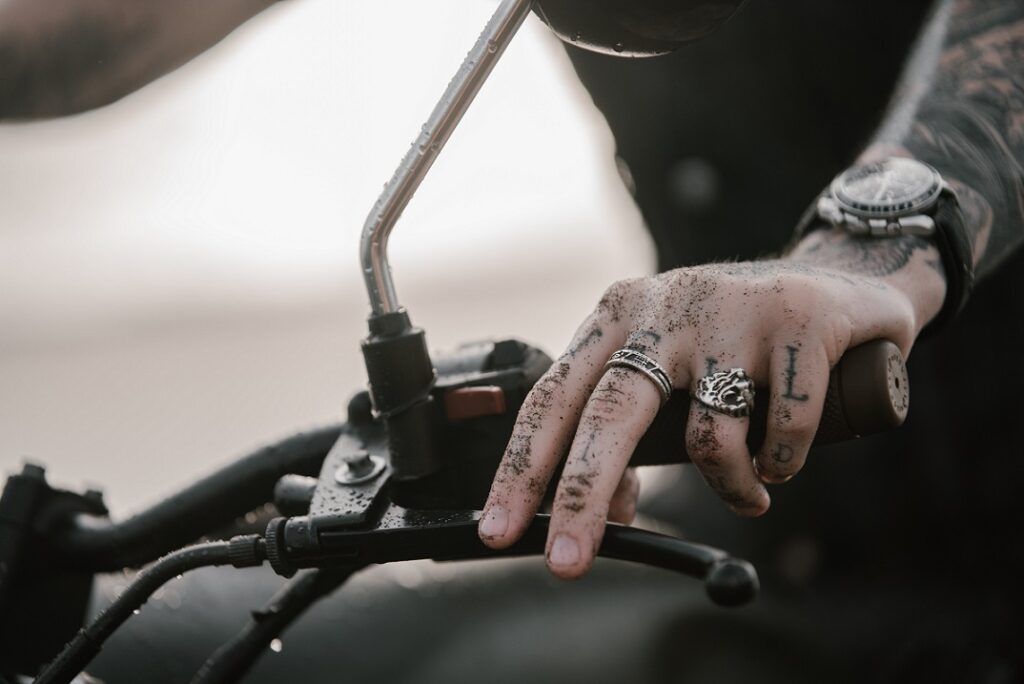
This is a beginner thing. While starting the motorcycle, if you are not pulling the clutch in then the motorcycle won’t start.
Similarly, you need to ensure that the motorcycle is in neutral gear. Neutral gear is the landing gear where the motorcycle will start.
You can also start the motorcycle in first gear by pulling in the clutch.
But for higher gears, you won’t be able to start as the motorcycle will die down once you release the clutch to move forward.
How to check
You need to check which gear the motorcycle is in. Oftentimes, motorcycle riders leave the bike at the gear they were the last running before halting.
So, when they start the motorcycle next time, the bike is in a higher gear and not neutral.
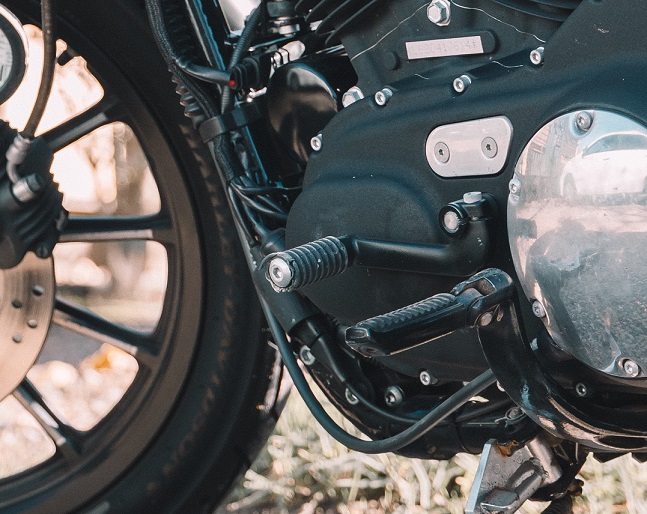
Check the gear you are in since the motorcycle won’t start in a higher gear. If the motorcycle is indeed in a higher gear, you need to change the gear.
How to fix
This is easy. For higher gear, just shift the gear down to the neutral gear.

Even first gear works as well as long as you pull in the clutch while electric starting or kickstarting.
That’s it. That should do the trick and you should be able to start your motorcycle without a hassle now.
Intermediate Starting Problems
Now that we have addressed all the beginner mistakes, it’s time to get your hands dirty.
We have labeled the next troubleshooting areas as intermediate solely for the reason that it requires you to inspect, diagnose, and replace the components if necessary.
Without further ado, let’s start then.
#6: Blown fuse
A blown fuse connected to the ignition circuit is a major cause for the motorcycle not starting.
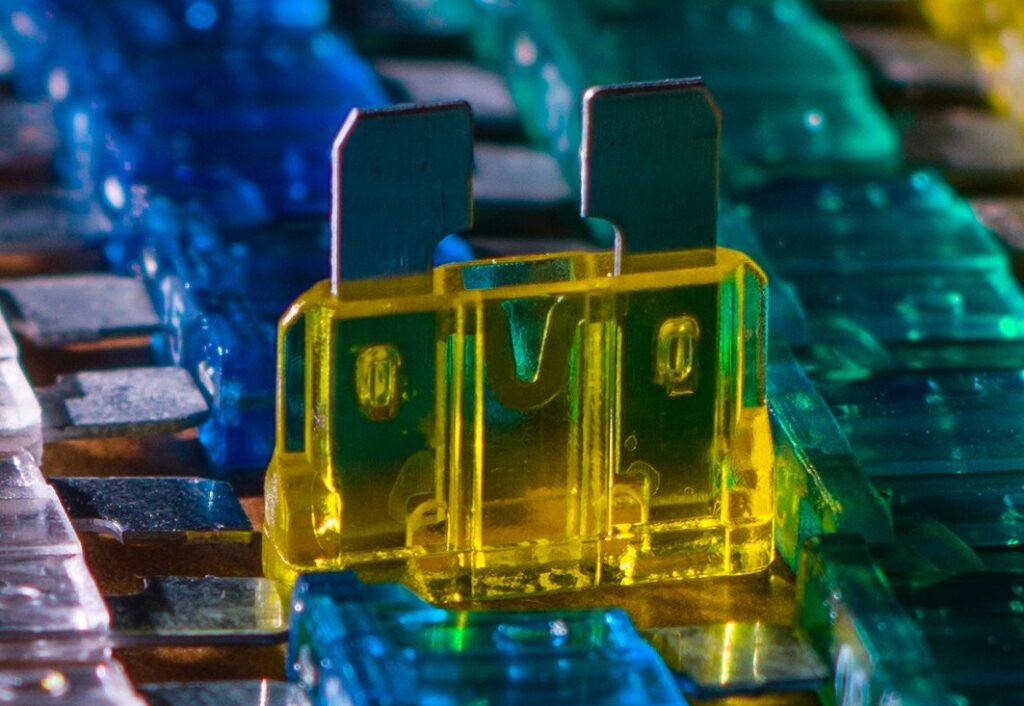
A motorcycle fuse is an electrical safety device that protects a circuit from overcurrent. If there is an overcurrent in the electric circuit, then the fuse sacrifices itself and blows out to safeguard the circuit.
Since there are various electric circuits in the motorcycles, they need fuses to protect them against overcurrent.
The motorcycle fuse can blow up because of any of the problems in the electric circuit ranging from short circuits to overloading to mismatched loads to the device failure.
How to check
To confirm it is indeed a blown fuse causing starting problems in your motorcycle, you need to check each fuse.
Most motorcycles have their fuses covered in a box. This box is obviously called – a fuse box cover (duh!). The fuse box cover is located directly below the seat and beside the battery.
Open the fuse box cover and you will see around 6-15 fuses depending on the number of circuits in the motorcycle.
For each circuit, there is a rated amperage. You can check these current ratings on the fuses where they will have markings like – 7.5, 10, 20, 30.

These numbers on the fuses are their circuit’s amperage rating. If the current exceeds the rating, the fuse will blow up and gets damaged.
Check each of the fuses. The starting problem is caused by either the main fuse or the ignition fuse.
To check whether the fuse is blown or not, all you need to do is see the metal strip inside the fuse. The U-shaped metal strip will be broken if the fuse is blown.
The strip will remain intact if the fuse is working properly and has NOT blown.
How to fix
If there is a blown fuse, the only solution is to replace the blown fuse with a new one.
You must always replace a blown fuse with a spare fuse of the same rating.
Few motorcycles provide spare fuses which are located near the battery. So, check for spare fuses near the battery in cases you have been provided with them.
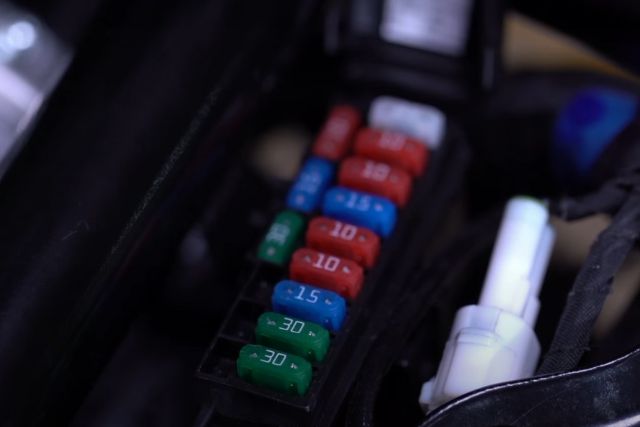
If not, buy a new fuse and make sure the amperage rating is the same.
Changing the fuse is easy. You need to pull out the blown fuse, if not already, and plug in the new fuse in place. Then, close the fuse box cover and reinstall the motorcycle seat (here is a step-by-step guide to replacing a blown fuse).
#7: Damaged spark plugs
A damaged or worn-out spark plug will not ignite the engine and can prevent the Enfield from starting.
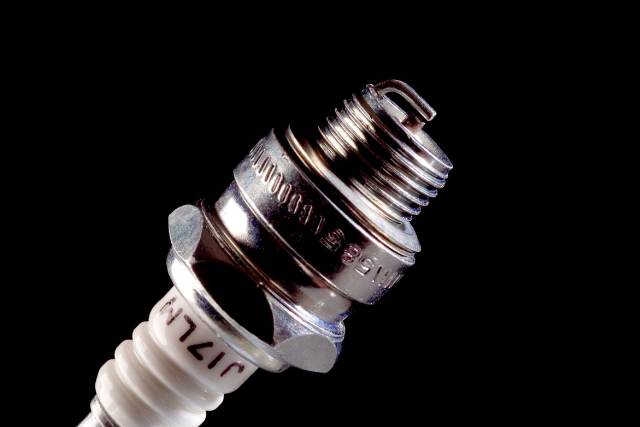
Spark plugs play a vital role in engine performance by igniting the fuel mixture. If they are not doing their job right, there will be lots of engine shortcomings and can even cause the motorcycle to not start at all.
That’s why a damaged or worn-out spark plug needs to be addressed as early as possible.
How to check
In the spark plug, you need to check 3 things:
- Is the spark plug cable connected to the spark plug?
- Is the spark plug in good condition? No deposits and oil fouling.
- Is the spark plug gap good? Electrodes should not be worn-out.
Start with the spark plug cable first. Is the wire connected right to the plug? Only if it is, proceed further.
Next, take out the spark plug from the engine. You can locate the spark plug wire going into the engine and can remove it from there.

Once removed, check the condition of the spark plug. You can read the spark plug based on the condition, color, and texture of the deposits (here is a guide on reading the spark plug condition).
Check the center electrode. If the electrode is worn out, or if there are deposits – be it oil fouling, carbon fouling, or ash deposits, then the spark plug needs to be replaced.
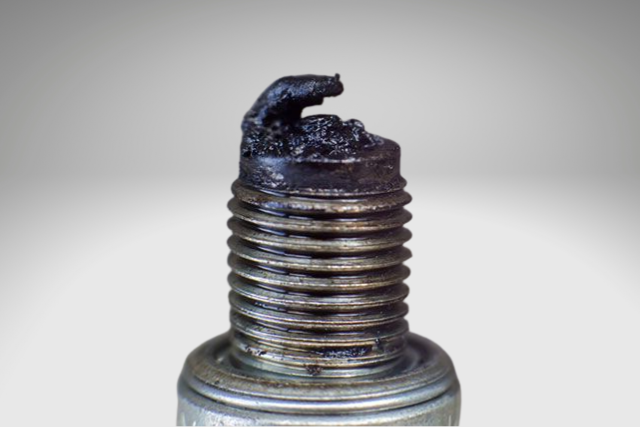
Problems in spark plugs can also be noticed in the form of symptoms like – engine misfiring, low fuel economy, rattling noise, rough idling, and starting problems.
How to fix
To address the spark plug problem, the solution is to replace the spark plug with a new one.
While the deposits can be cleaned with a wire brush and the old spark plug can be reused, it is not the best solution.
Old spark plugs are more susceptible to getting worn out again. So, it is better to replace the spark plug with a new one. Especially when the spark plug is creating starting problems.
For spark plug change, here is a step-by-step guide to change spark plugs for your reference.
Before installing a new spark plug, check the spark plug gap and ensure it falls within the tolerance limits specified by the manufacturer.
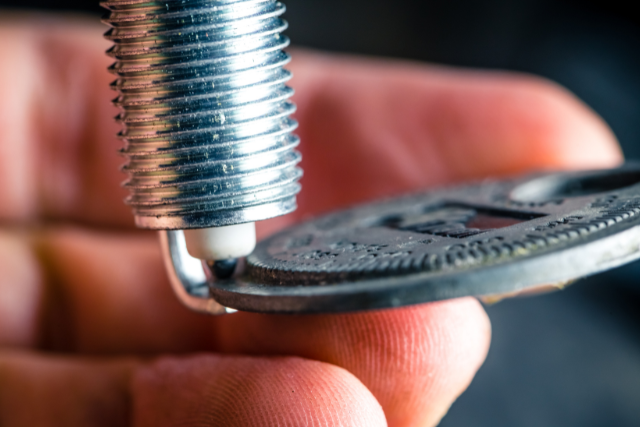
Also, ensure that the plug washer is in good condition. Lastly, tighten the new spark plug (a half turn after it seats). The motorcycle is ready to go now.
Advanced Starting Problems
This last section covers advanced problems preventing your Royal Enfield from starting.
These problems are headaches for sure.
They require an expert skill level to address the problem. The fix is most definitely going to be of high difficulty. Going to the dealer or service center is a better option here than DIY.
With that thoughts, let’s dig in.
#8: Battery problem
Battery problem is common. But they come in different forms, even corroded terminals can cause starting problems.

The battery is actually one of the first things that you need to check when the motorcycle is not starting.
I know. I have kept it so down in this post. That’s because the level of skill required to address a battery issue is far higher than turning OFF the kill switch.
The idea of the post was to go from easiest fixes to headache fixes.
Let’s start the inspection then.
How to check
Modern Royal Enfield models, especially Continental GT and Himalayan motorcycles have battery voltage indicators.
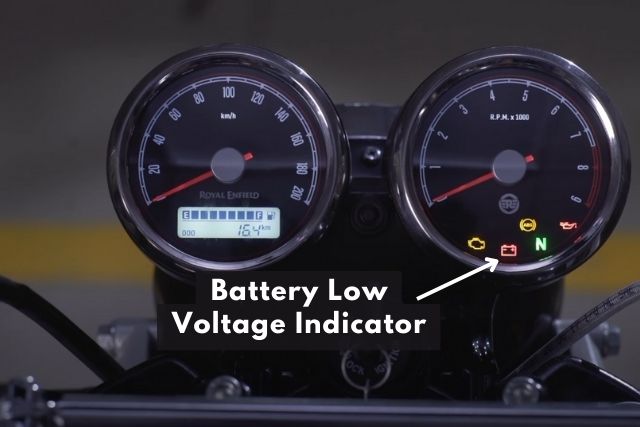
If the battery low voltage indicator is glowing, then there is something wrong with the battery.
Once we know the battery is the problem, it’s time to narrow down the problem. Battery problems can be of different types:
- Battery is dead or not charging up
- Battery is good, but the charging system is not working
- Battery is good but the terminals are oxidized
This is where DIY becomes tough. If you are not sure, it is better to take the issue to your dealer or the service shop.
How to fix
Start with the terminals first. If the battery terminals are corroded, you need to clean them.
If there are white or blue-green deposits on the battery terminal, then the terminal is corroded.

You need to clean the corroded terminals.
Take up a wire brush, baking soda, water, and a towel rag.
Mix the baking soda with water and use the solution along with the wire brush to clean the corroded terminals.
If the charging system is the problem, you need to diagnose whether the battery is dead or it is not charging because of the alternator, or regulator rectifier.
Here is a post on how you can diagnose the rectifier and regulator problem.
Lastly, check if the battery is good. Take a charger and try charging it up. If it charges, the battery is not dead.
You can also use a multimeter to check battery voltage.
If not, the battery is dead and you need to replace it in your Enfield.
#9: Engine malfunction
Engine malfunction is a nightmare!
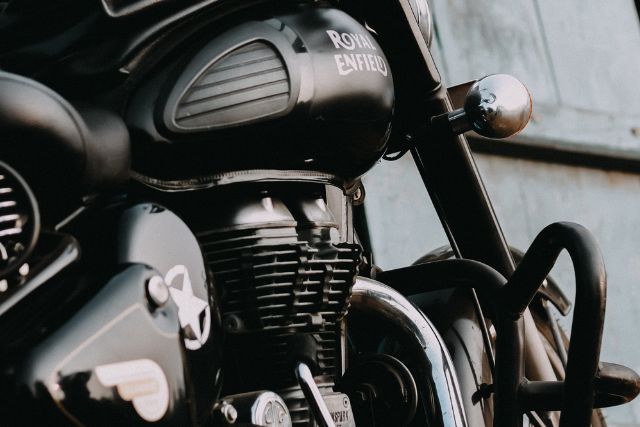
This is the worst and the most difficult to fix cause for starting problems for your Royal Enfield.
Let’s both hope this is not the problem. And you don’t have to scroll this far to address starting issues.
How to check
Technology has gotten better in Royal Enfield motorcycles. And one of the best things is the engine malfunction indicator.
If your Royal Enfield motorcycle has the engine malfunction indicator glowing, then there is a problem with your engine. And is causing the starting problem.
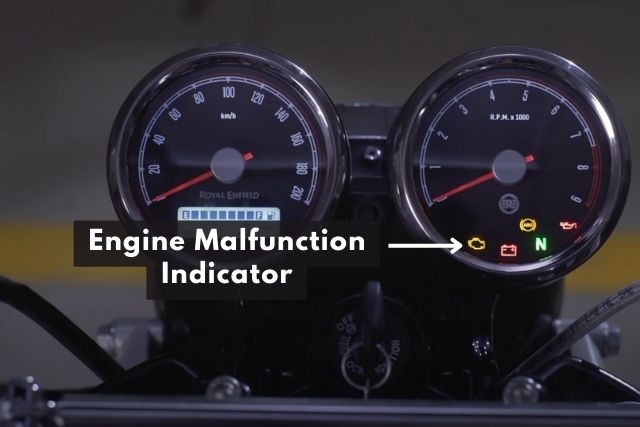
How to fix
Unfortunately, engine problems are too much complex to handle. And I do not have such a high level of expertise to advise you on that.
Plus, working on a motorcycle engine is not a DIY job. It requires advanced repairing skills.
So you would be better off taking your motorcycle to your dealer or a Royal Enfield authorized service center.
Conclusion
It’s frustrating when your prized Royal Enfield bike won’t start. Here is a quick recap of the inspections.
- Check 1: Ignition switch – make sure the ignition switch is turned “ON”.
- Check 2: Fuel level – check the fuel level and fill up the tank if low.
- Check 3: Kill switch – the red button should be “OFF”.
- Check 4: Reserve fuel switch – should be turned “ON”, or in the “RES” position.
- Check 5: Gear and clutch – make sure the gear is not engaged and the clutch is pulled in while starting the Royal Enfield.
- Check 6: Fuse – check if the fuses are not blown.
- Check 7: Spark plug – inspect the spark plug condition and replace it if necessary.
- Check 8: Battery – make sure the battery and the charging system are in good working condition.
- Check 9: Engine – ensure no engine malfunction.
